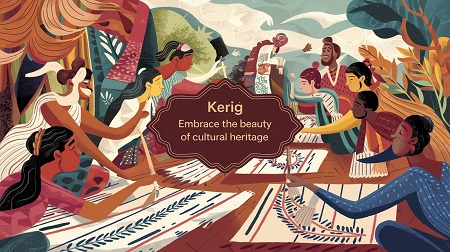
Kerîg is a captivating topic that intertwines mythology, natural wonders, and cultural significance. While many may not be familiar with the term, it represents a rich tapestry of meanings across various contexts. In this article, we’ll explore what Kerîg is, its historical background, and its relevance today.
What is Kerîg?
Kerîg, often associated with ancient legends and nature’s beauty, refers to a specific type of landscape feature known as a volcanic crater lake. Found primarily in regions with volcanic activity, Ke rîg lakes are formed when craters fill with rainwater, creating stunning blue waters surrounded by steep, rugged cliffs.
The Origins
The word “Kerîg” is derived from various languages and traditions, often symbolizing “crater” or “pit.” In Icelandic, for instance, it is linked to Kerið, a well-known volcanic crater lake located in the Grímsnes area of Iceland. The history of such craters dates back thousands of years, formed through volcanic eruptions and subsequent geological processes.
The Beauty of Kerîg Lakes
Kerîg lakes are celebrated for their unique and striking beauty. Here are some notable features:
- Vibrant Colors: The water in Ke rîg lakes often exhibits brilliant shades of blue and green, influenced by mineral content and the surrounding landscape.
- Geological Significance: These lakes provide valuable insights into volcanic activity and geological changes over time, making them of interest to scientists and geologists.
- Biodiversity: Ke rîg lakes can host various flora and fauna, creating ecosystems that support unique species adapted to their environments.
Cultural Significance of Kerîg
In addition to their natural beauty, Ke rîg features prominently in folklore and mythology. Many cultures have woven tales around these lakes, attributing mystical properties to them. In some traditions, Ke rîg is seen as a portal to the underworld or a sacred space for rituals and gatherings.
Kerîg in Modern Context
Today, Ke rîg lakes attract tourists and nature enthusiasts from around the world. Their breathtaking landscapes make them popular destinations for hiking, photography, and exploration. Environmental preservation efforts are also in place to ensure that these natural wonders remain protected for future generations.
FAQs About Kerîg
1. Where can I find Kerîg lakes?
Kerîg lakes are primarily found in volcanic regions. The most famous is Kerið in Iceland, but similar features exist in other parts of the world with volcanic activity.
2. How are Kerîg lakes formed?
Ke rîg lakes are formed when volcanic craters fill with rainwater, creating a lake within the crater. This process can take thousands of years and is influenced by geological activity.
3. Are Ke rîg lakes safe to visit?
Yes, most Ke rîg lakes are safe to visit, but it’s essential to follow local guidelines and respect nature. Always stay on designated paths and be mindful of your surroundings.
4. What activities can I do?
Visitors can enjoy various activities such as hiking, photography, birdwatching, and picnicking. Some locations may offer guided tours for a more in-depth experience.
5. Is there any mythology associated with Kerîg?
Yes, many cultures have myths surrounding crater lakes. They are often viewed as sacred spaces or portals to other realms, reflecting humanity’s fascination with nature and the unknown.
Conclusion
Kerîg represents a fascinating intersection of nature and mythology, showcasing the beauty and complexity of our planet. Whether you’re a nature lover, a mythology enthusiast, or a curious traveler, exploring Ke rîg lakes offers an unforgettable experience. Dive into the world of Kerîg and discover the wonders that await!


